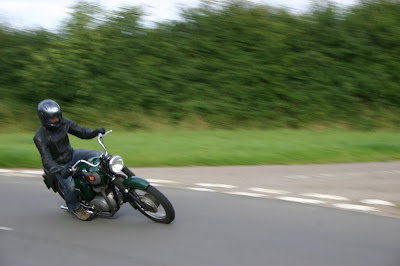
This is the first Brit bike I've ever had in my garage. It's a 1962 BSA A50, which means it's as old as me, although (unless there's something I don't know) it's in considerably worse nick. It belongs to Fee, a friend in Cornwall, who keeps it in a shed round the back of her house, where it avoids most of the sea spray unless there's a serious storm whipping up. When it finally refused to start I offered to have a look.
I've sniffed around a few musty bikes in my time but the hum off this one is quite something – a miasma of three parts old oil, eighteen parts mould, and a generous dash of despair. The period factory manual, if anything, is even niffier. No matter.
It didn't take long to figure out the problem. The wiring was held together with the ubiquitous crap pre-insulated red and blue fasteners and bits of tarnished cable, none of which resembled the colours in the manual. My favourite touch was two alternator wires twisted together and rubbing on the crankcase.
Being used to Japanese electrics I took a while to grasp the stone age simplicity of switched alternator coils, and a brake light and horn which work even with the ignition off.
But eventually I figured out what I needed and ordered up the right coloured cables from the excellent Vehicle Wiring Products. The horn, rectifier, zener diode and switchgear all test OK, and Fee thoughtfully added Boyer Bransden III ignition at some point. I've now set to converting all the connectors to Japanese bullet spec. Total cost so far: about £15.
I must admit I find the whole thing strangely satisfying.









